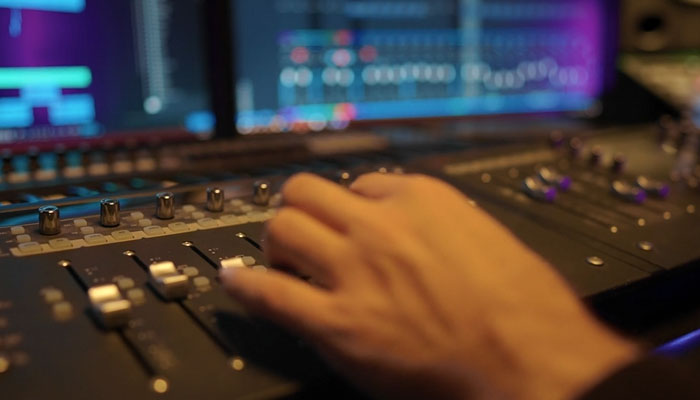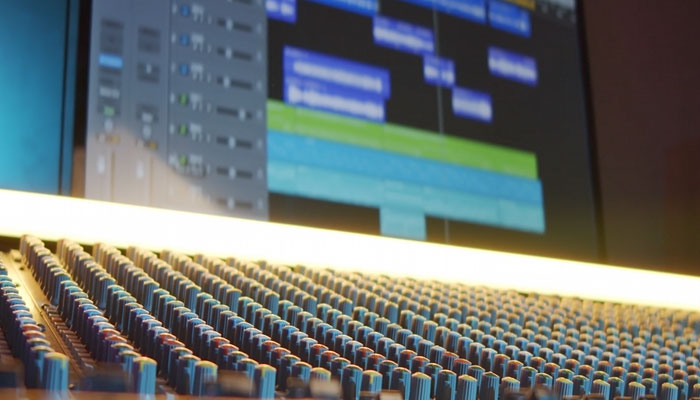When you start as a music producer, there are plenty of skills you need to learn. Some of these can be technical, and sometimes it can be as simple as getting the band to show up on time (or indeed at all).
However, when it comes to the technical side, certain skills are vital. Mixing music to create a seamless whole is one skill that can be the difference between a perfect-sounding song and an absolute cacophony.
What is music mixing? And how can you mix correctly? Let's explore the topic and get some clarification.
What is Mixing?
The simplest way to describe mixing is that it is the process of combining everything that's been recorded for a song together so that it sounds good. Sounds straightforward, right? Well, yes, but also very much no - there is an art and skill to the sound mixing process that goes far beyond simple technical ability.
When a song is recorded, you will have different elements of the song recorded on separate tracks. Even the simplest recording, like an acoustic song, will have two - the guitar and the vocal. The more instruments you have and the more singers you have, the more tracks you will end up with, and the more you need to balance and combine them to achieve an overall effect.
What is the Main Goal of Mixing?
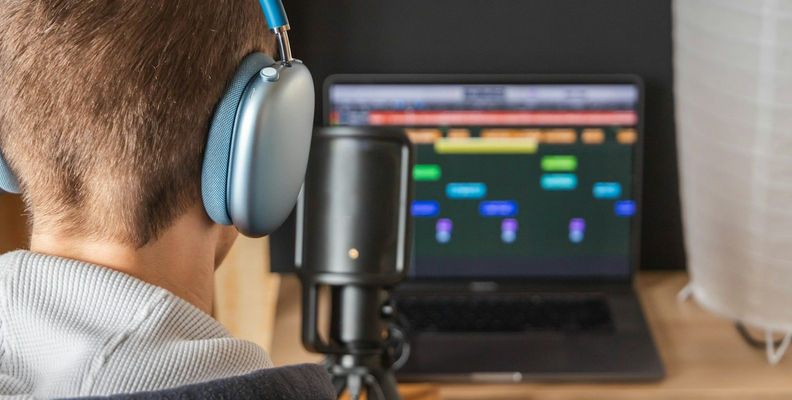
What is described above is the main goal of mixing - balancing all these different elements against each other to bring out the best in the song. This is true across all music genres - whether you're laying down the latest hip hop beats or delivering a soaring guitar solo, your track will need to be mixed to make each individual element work with all the others.
Learning how to mix is one of the most important aspects of music production, and a good mixing engineer is worth their weight in gold. When done correctly, the song will sound like a unified whole, with individual tracks clear and distinctive and working together to make the best of the song.
A bad mix, on the other hand, can mean elements that have been recorded getting lost or swamped out, don't have the power (or the delicacy) you want them to have, and can detract from the band's performance or the songwriting.
The goal of mixing should always be to combine all the individual elements in a song to make it sound its best, to highlight the songwriting, and to ensure the listener has the ideal experience they can have and gets the most out of the song.
The Music Mixing Process: Step by Step
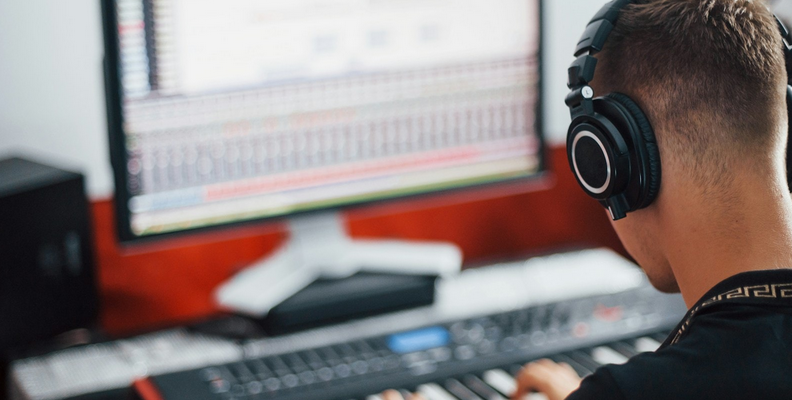
The first and most important thing to say about this is that there is no perfect way to mix a song - there is no simple formula that will magically mean your song ends up mixed perfectly. Audio mixing requires techniques that can be learned, but every song is different, every performance is different, and every approach is different, so there is no one single "correct" way to mix a song.
However, there are certain steps that can be followed when mixing music that will keep any mixing engineer in good standing.
-
Good Equipment
Let's start with the basics. If you want to be a good mixing engineer, you're going to need good equipment. This is a necessity even before you hear your first note, and it's a vital step.
Most digital audio workstations (DAWs) will be more than sufficient for your mixing needs on the software front, whether they're free software packages like Audacity or expensive professional packages like Adobe Audition.
However, you're not going to be able to get the best sound out of your song if you are listening to it on cheap headphones. Investing in a good pair of headphones or monitor speakers pays endless dividends. Equally, if you invest in an audio interface, get one that you know will be up to the job. Interfaces can vary wildly in price and quality, so it's worth doing some research to ensure you get one that will deliver real quality.
-
Volume and Levels
The next step is to ensure your volume and levels are correct. There are few things more important for a mixing engineer to be able to do well than balance volume levels. This is absolutely crucial. If you mix your vocal tracks too quietly, they will get drowned out by everything else. If you mix an instrument too loudly, it can dominate a song and wipe everything else out.
Finding ways to balance the levels and volumes of individual tracks is a real skill, and it's one that takes time and practice to develop. You can control how a song comes across and how it sounds by getting the volume levels correct, and it is one of the most crucial components in a song.
-
EQing

EQ, or equalization, is adjusting parts of the audio spectrum of the track to get a good sonic balance. EQing usually consists of adjusting a number of bands that affect certain frequencies within the track. You can increase or decrease the frequency range to adjust the treble, mid, and bass parts of the track.
There are plenty of ways this can prove useful when mixing music. Some instruments can occupy very similar audio frequencies, for example, having more than one guitar on a song. By adjusting the EQ of each guitar, you can make them stand out clearly from each other so they don't overlap and become "muddy". You might increase the treble frequency on an acoustic guitar to make it sound bright and clean, but reduce the treble on a lead guitar so it sounds different and doesn't get lost in the mix.
However, EQ with caution. You want to make relatively small, subtle changes to your recording to preserve as much of the original sound as possible while ensuring everything sounds good together. Over-zealous EQing can lead to unnatural, odd-sounding tracks, so use a light touch, and you'll be able to make a real difference to the song.
Learning good mixing techniques, like how to EQ well, can make or break the quality of a song, and proper mixing at the EQ stage will result in a great-sounding track.
-
Panning and Space
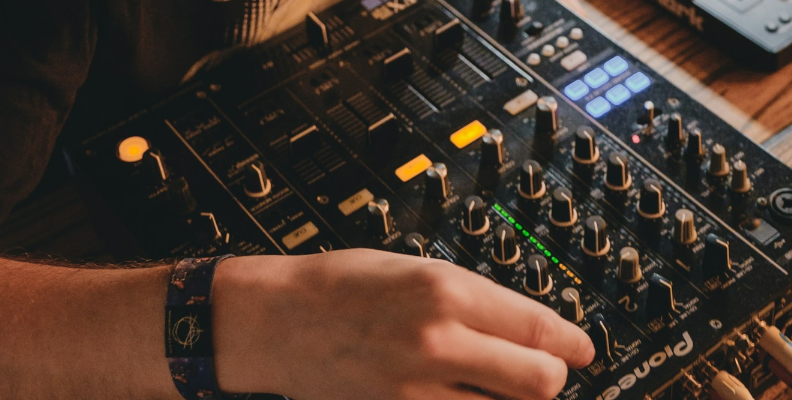
Panning is taking an instrument and making it sound like it's coming from the left or right speakers. This is known as stereo imaging, and adjusting an instrument to sound like it's coming from the left and right speakers can have a surprisingly big impact on the overall sound of the song you are mixing.
One of the things you can do with panning is adjust how the song sounds in terms of its space. If you have a wide separation on the left and right channels, it can make the song sound like it's been recorded in a huge space, creating a sense of atmosphere and occasion. Conversely, if you have everything sound close, you can create an intimate feel.
However, it's wise to be cautious when using panning. For example, if you are panning sounds left of the stereo image, you will only hear it in one ear, which can be a bad listening experience. Similarly, if everything is crammed right in the middle of the stereo image, the instruments or vocal tracks can overlap and become lost.
A good mixing engineer will know how to apply panning to help get clarity on each element of the song while being able to provide a sense of space that complements the recording.
-
Compression and Dynamic Range
Understanding compression and dynamic range is another key step in mixing your track. Dynamic range refers to the difference between the quietest and loudest parts of the track. The bigger the dynamic range, the bigger the difference between the quiet and loud parts. When a song is at the mixing stage, you want to ensure that the difference between the loud and quiet parts isn't too extreme because that can make the song difficult to listen to.
Using a compressor is a mixing engineer's tool to resolve this. Compression will reduce the difference between the loudest and quietest parts of a signal so that the loud parts are a bit less loud and the quiet parts are louder. This helps create a more even sound throughout the track.
For example, if a drummer hits a snare drum, he won't always hit it with exactly the same force every time. Sometimes a hit might be harder or softer, which means the recorded sound is louder or quieter. Applying compression to the snare drum will make every hit sound like it's the same volume.
-
Effects
Finally, we have effects. These can be simple effects, like adding reverb, echo, or delay, or they can be more complex, depending on what you want to achieve.
There are nearly an infinite number of effects available, both paid for and free, and finding the right one for your song can be a challenge. A good rule of thumb is to have a few effects you use regularly, then if you need something special, you can always search for it. It's very easy to fall down a rabbit hole of playing around with thousands of effects because it's fun, but it doesn't help you get your track finished.
A good mixing engineer will know when to apply a judicious effect but also when not to - restraint can be as important as layering things on.
Tools and Software for Music Mixing

There's a wide variety of tools and software for music mixing available, and the quality can vary greatly. There is a near-infinite range of plug-ins, software, and other tools that can help you with your sound mixing.
However, if you want to be confident of getting the best results, the Sequoia, Samplitude, and Music Studio software from Boris FX are a great place to begin. No matter what level of experience or knowledge you have, whether you are just starting out or are a seasoned industry professional, you will find a package to suit your needs.
Common Mistakes in Mixing Music
There are many mistakes that people make when mixing for the first time.
Firstly, there's the temptation to try everything. If you have a million effects, it's easy to become distracted or to simply throw everything at the wall and see what sticks. Having a good workflow will help you out here - following one will help you maintain good discipline when you're mixing music, and should mean you don't miss or skip any stages.
Another common mistake is making big changes too quickly. It's better to make small, incremental changes until you achieve the effect you want. That way, you'll find it easier to control your mixes and not lose instruments or vocals in the mix.
Keeping frequencies separate is also important and easily missed. This is where good EQing comes in and where you can really add clarity to your mix so that all the components shine. Start gradually, and adjust only as much as you need to - heavy-handed EQing will damage the track rather than improve it.
Finally, don't be afraid to experiment! Everyone makes mistakes sometimes, but experimenting means you can learn from those mistakes and improve on things the next time you're mixing.
Final Words
While mixing can seem complex, a few simple rules and a basic understanding of what's involved can help immensely and will lead to great results. Find the right song, give it your best, and you'll have a perfectly mixed track in no time at all!
FAQ
What is Mixing in Music vs. Mastering?
Mixing and mastering music are two different skills. Mixing, as we have seen, is the blending together of everything that has been recorded to create a cohesive whole. Mastering, on the other hand, is taking the song once it has been mixed and ensuring that it sounds great.
Mastering engineers usually work with the completed stereo mix of the song and adjust it using a number of different mastering tools to figure out the way to get it sounding its best - not just for the song alone, but also making sure that it fits with any other songs in your project, and making sure it sounds good on whatever playback system you use.
Imagine you are writing an album. You want every song on the album to "fit" together. You want to ensure they all sit at the same volume, that it's not jarring moving from one song to another, that they all sound like they've been recorded by the same person, and so on. You don't want one song to sound bright, full of treble, and poppy if the next one sounds sludgy, bass-heavy, and slow, because that's a horrible gear change for the listener.
The styles can be different - slow to fast, quiet to loud, or whatever - but all the songs need to feel as if they are all of a piece together. That's what mastering is - ensuring all the songs sound like they belong together and then that they sound their best when they are released into the world.
How Long Does Mixing a Song Take?
There's no one definitive answer to this question because each song is different. It will be considerably faster to mix a song that just has a couple of elements in it, like a keyboard line and a singer, than it will be to mix a song that has dozens of different instruments and vocals on it.
However, if you want to save time when mixing music, getting balances right during the recording process can save a lot of time. The less you need to adjust in the mix, the less time it will take. Mixing music also takes time to learn, so don't set any expectations - just work at your own pace.
Why is Mixing Essential in Music Production?
Because you want the song to sound as good as it possibly can! It's a simple answer, but that's the reason - to get everything to sound good, you need music mixing to be done well. And now you have all the knowledge you need to achieve just that!









